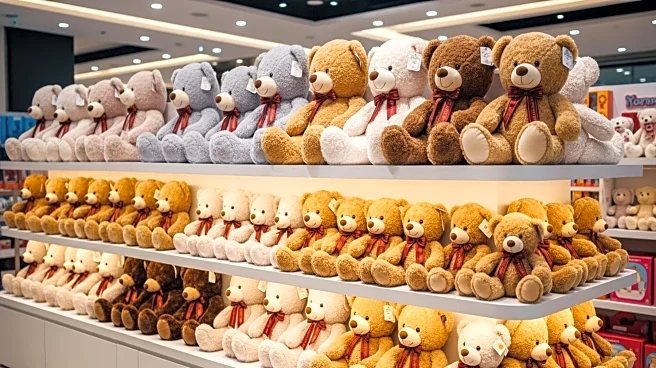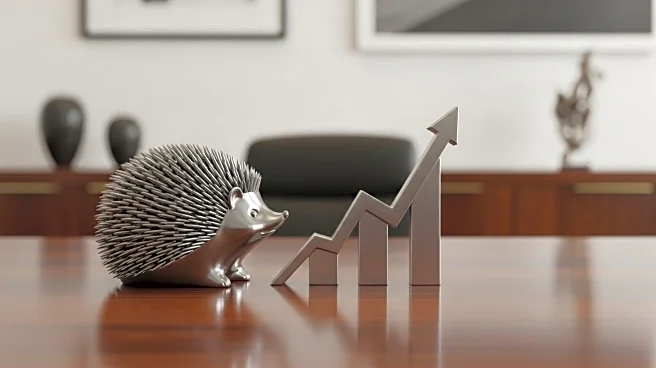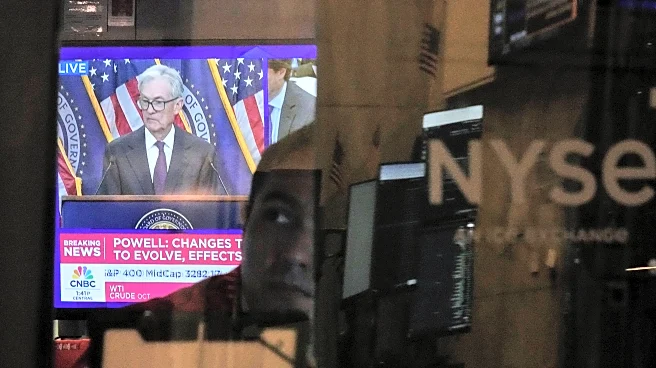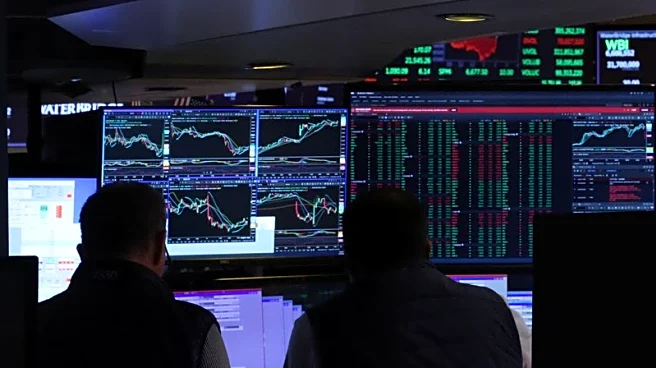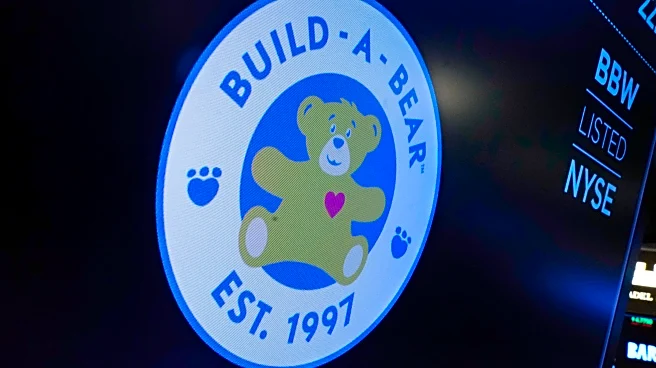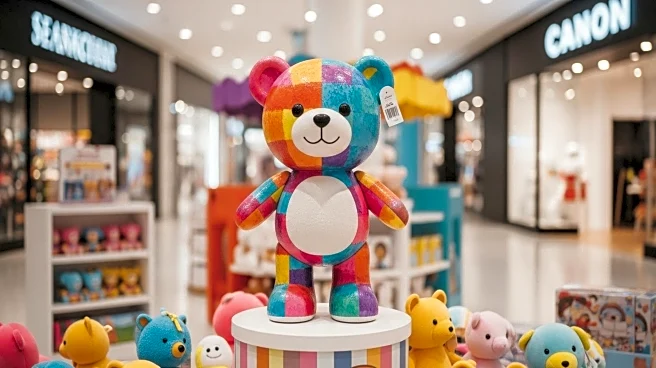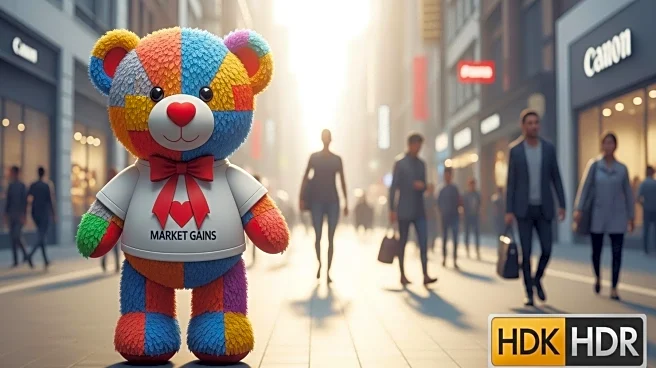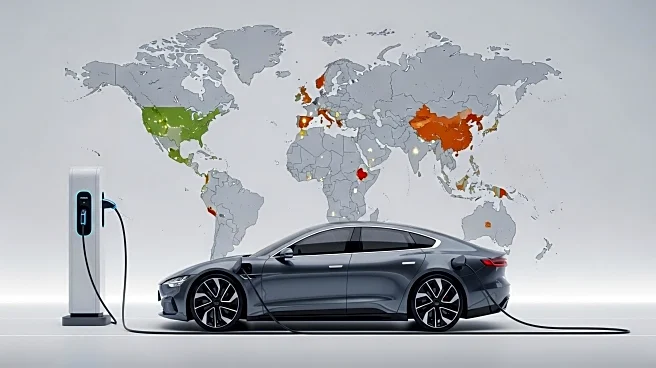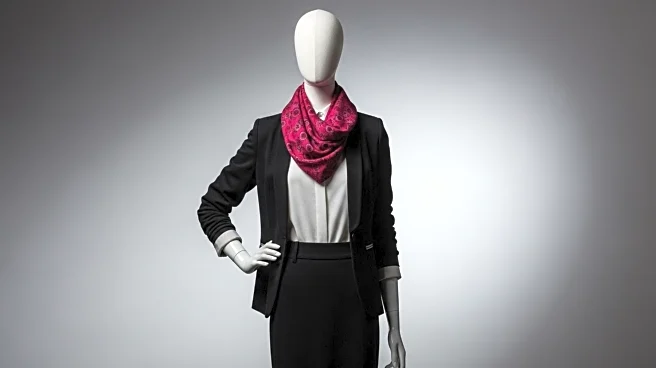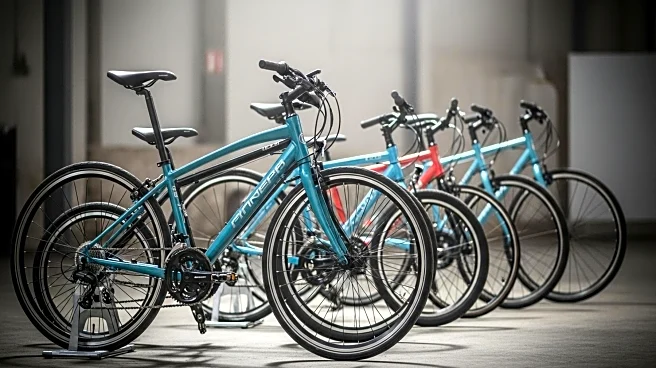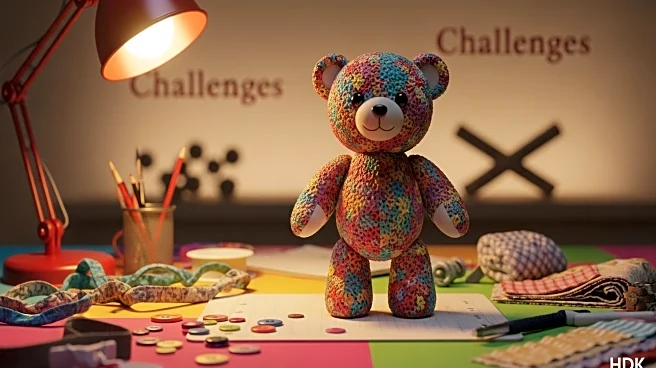What is the story about?
What's Happening?
Build-A-Bear Workshop has seen significant market gains, with its shares increasing by over 60% since the beginning of 2025, trading at nearly $72 per share. This growth is notable compared to the S&P 500's 13% increase over the same period. The St. Louis-based retailer has managed to thrive despite challenges such as tariffs and declining mall traffic, which have affected the broader toy industry. Build-A-Bear's business model, which involves customers creating their own plush animals in-store, has contributed to its success. The company reported record profits in recent quarters, with revenues reaching $252.6 million and pre-tax income climbing to $34.9 million in the first half of 2025. Despite facing tariffs on imports from China and Vietnam, Build-A-Bear has raised its financial outlook for the year.
Why It's Important?
Build-A-Bear's success highlights the resilience of niche retail models that offer unique consumer experiences. The company's ability to maintain growth despite tariffs and mall traffic challenges underscores the importance of adaptability in the retail sector. This development is significant for U.S. businesses facing similar economic pressures, as it demonstrates that strategic planning and consumer engagement can mitigate adverse effects. The toy industry, which has been relatively soft, can look to Build-A-Bear's approach as a potential model for navigating economic headwinds. The company's performance also reflects broader trends in consumer behavior, where experiential shopping is increasingly valued.
What's Next?
Build-A-Bear plans to continue its expansion efforts and maintain strong store performance. The company anticipates tariffs will cost under $11 million for the fiscal year, but it remains optimistic about its earnings, projecting pre-tax income between $62 million and $70 million for 2025. The retailer's strategy includes inventory increases to cushion against tariff impacts, and it aims to limit consumer-facing price hikes. As Build-A-Bear navigates these challenges, its approach may influence other retailers facing similar economic pressures, potentially leading to shifts in sourcing and pricing strategies across the industry.
Beyond the Headlines
The success of Build-A-Bear amid economic challenges raises questions about the long-term viability of traditional mall-based retail models. As consumer preferences shift towards experiential shopping, retailers may need to innovate to attract foot traffic. Build-A-Bear's model, which combines product creation with entertainment, could inspire other businesses to explore similar strategies. Additionally, the impact of tariffs on retail pricing and sourcing decisions may prompt broader discussions on trade policies and their effects on U.S. businesses.
AI Generated Content
Do you find this article useful?
